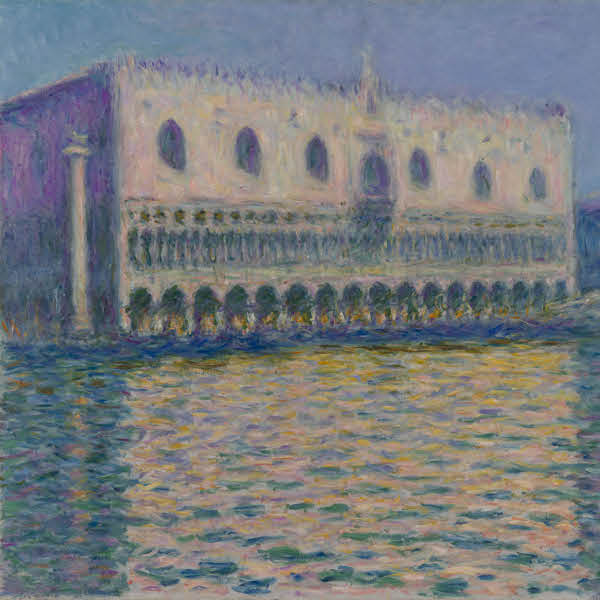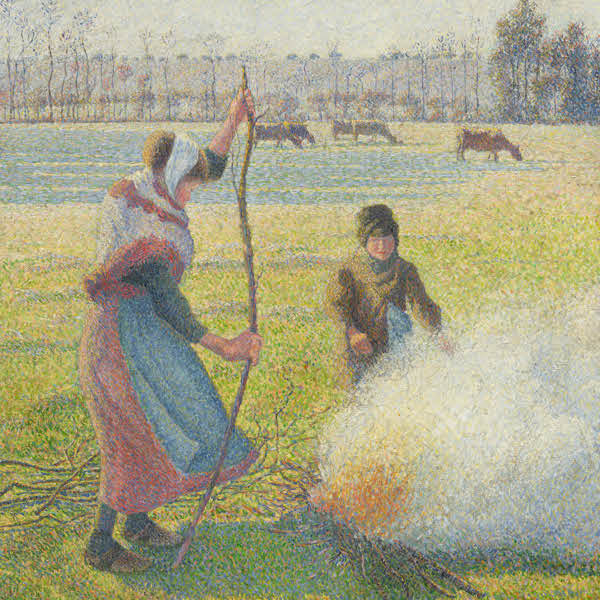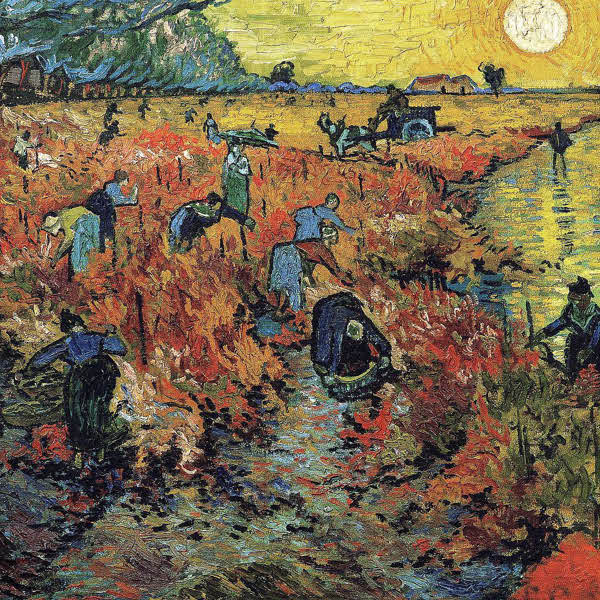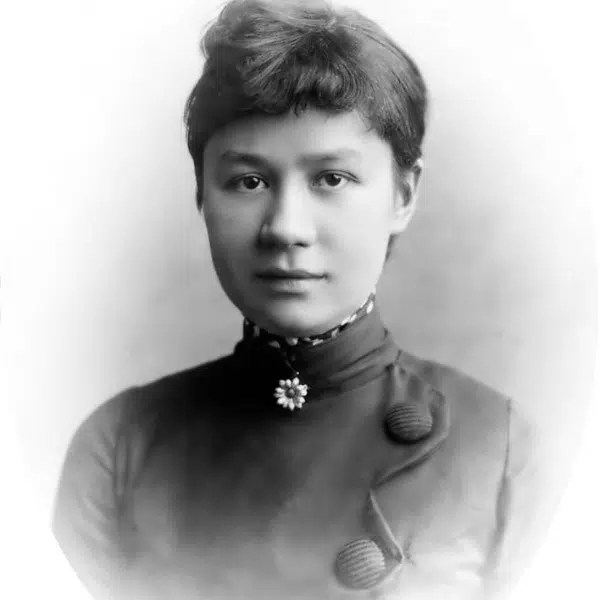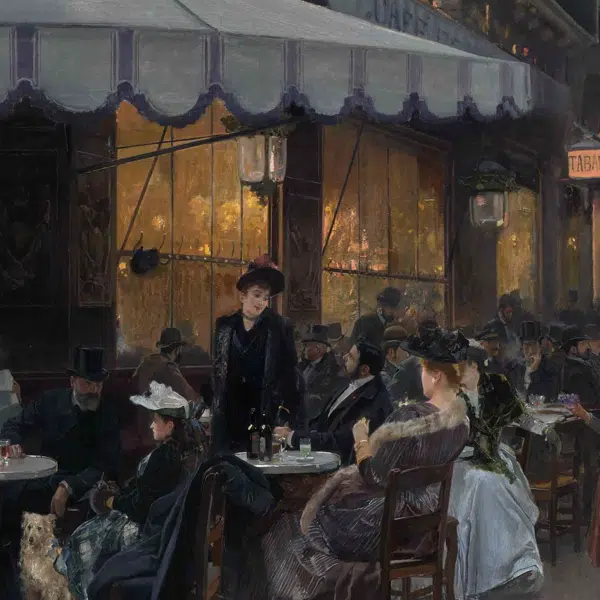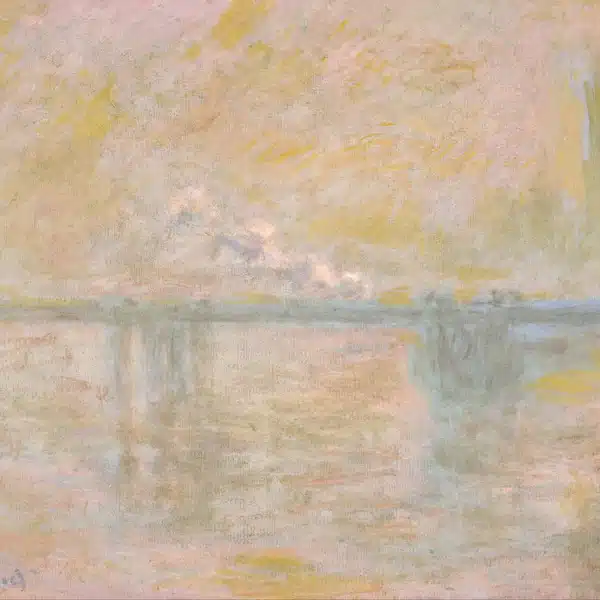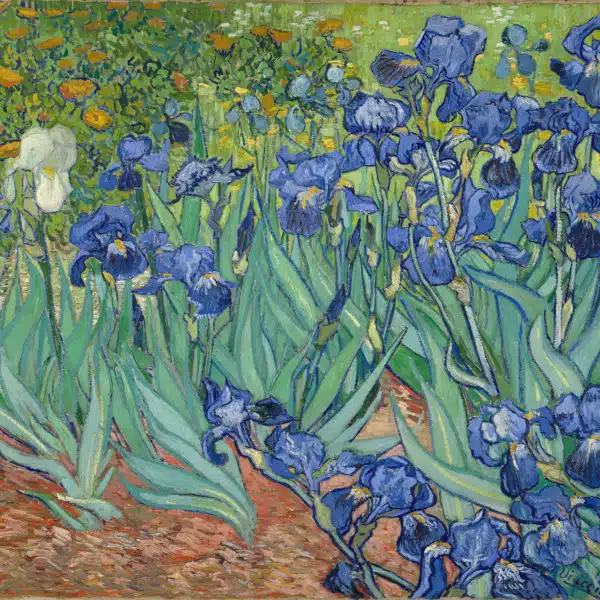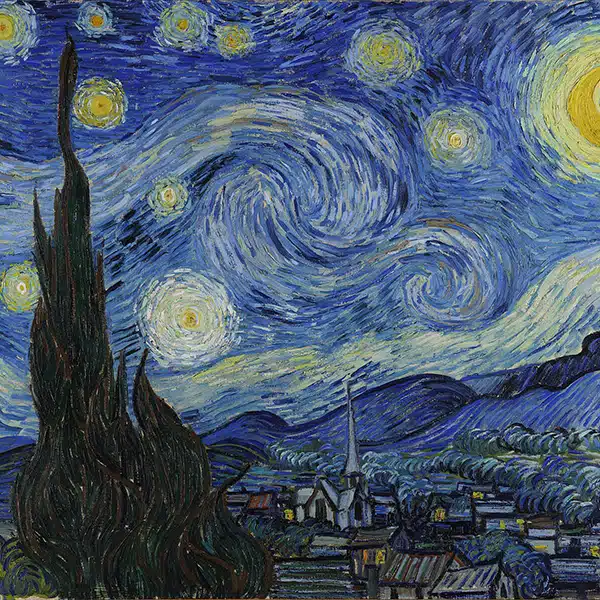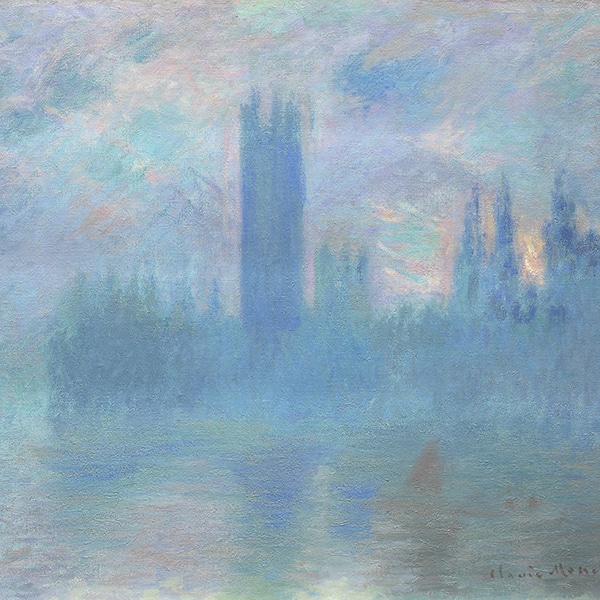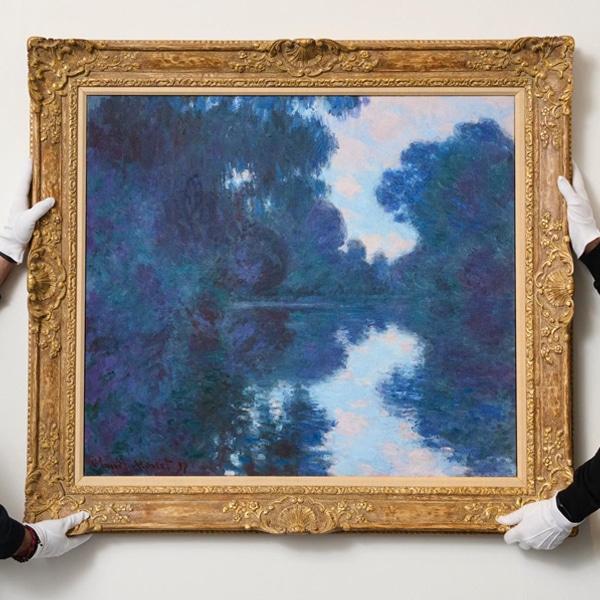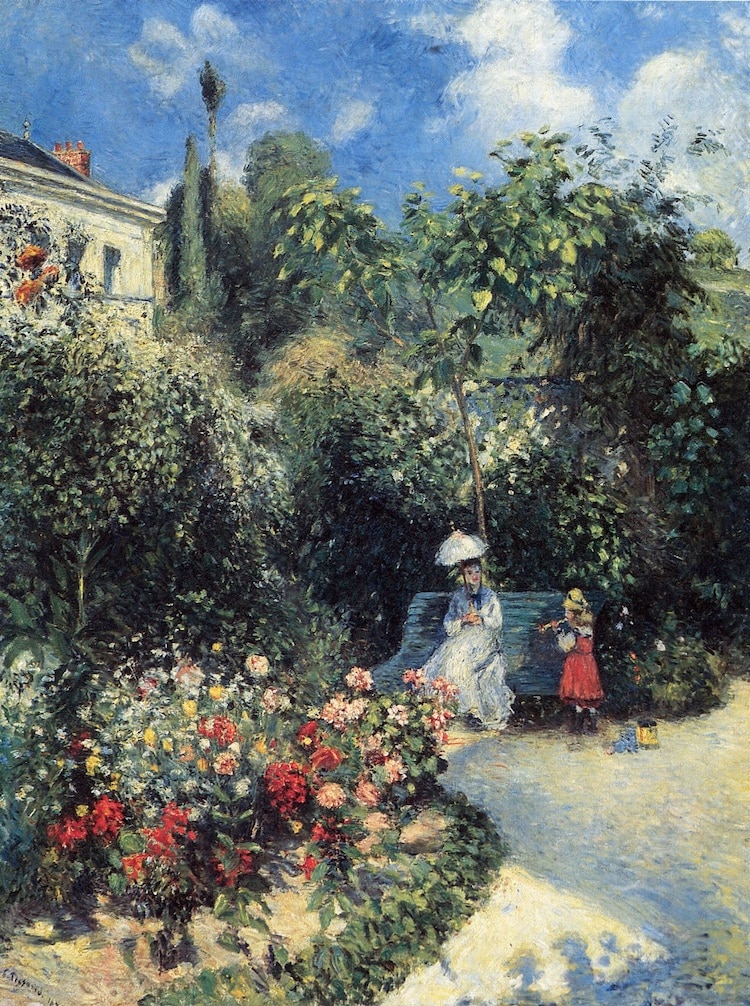
Camille Pissarro, “The Garden of Pontoise,” oil on canvas, 1877. (Photo: Wikimedia Commons, Public Domain)
Impressionism was an art movement that revolutionized the course of art history. Instead of adhering to the strict rules of the Salon, its artists sought to depict their subjects en plein air, capturing transient moments of light and color in the process. And while many are familiar with the name of its primary pioneer Claude Monet and his beloved Water Lilies series, there's another painter who was instrumental in the style's development: Camille Pissarro.
Originally from the island of St Thomas, the Danish-French artist was the oldest painter among the Impressionist collective and the only one to exhibit at all eight exhibitions. Like his contemporaries, Pissarro captured landscapes and individuals in their natural settings using quick painting techniques. He also acted as an influential teacher for important artists, including Paul Cézanne. In addition, Pissarro was one of the few Impressionist artists who immersed himself in the subsequent Post-Impressionist movement, incorporating approaches like Pointillism into his work.
Here, we will explore the long prolific career of Pissarro.
Who is Camille Pissarro?

Camille Pissarro, “Self-Portrait,” 1903 (Photo: © Tate , CC-BY-NC-ND 3.0, Unported)
Camille Pissarro (1830 – 1903) was a 19th-century Impressionist painter from the island of St. Thomas (which at the time was part of the Danish West Indies). His first exposure to fine art was at a boarding school in France, which inspired a life-long passion for drawing and painting. He spent much of his youth on St. Thomas and later, in Venezuela, drawing from nature and learning how to best capture the landscape.
Then, when he was 25 years old, Pissarro moved to Paris, France to be at the center of the art world. There, he became fascinated by the radical art movement of the time—Realism. Its focus on depicting the truth and its preference for portraying rural life appealed to Pissarro and set the foundation for his fluid pictorial style.
“En Plein Air” Painting
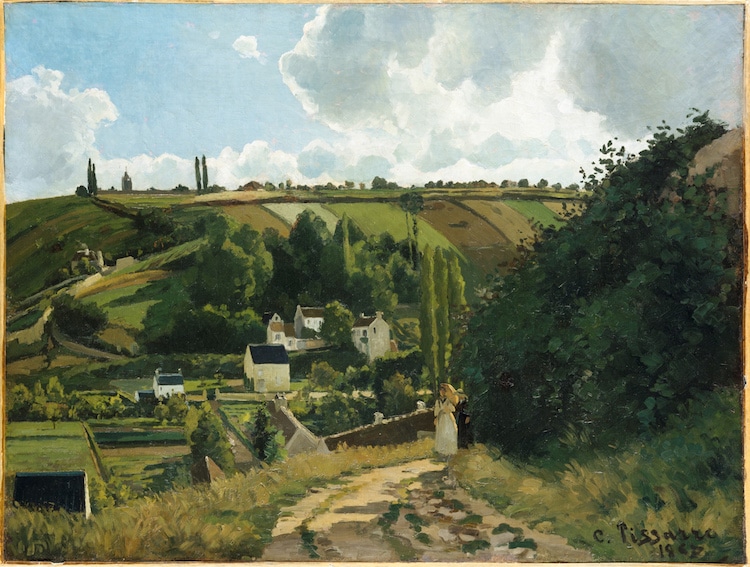
Camille Pissarro, “Jalais Hill, Pontoise,” oil on canvas, 1867. (Photo: The Met, Public Domain)
Inspired by Realist painters Camille Corot and Gustave Courbet, Pissarro eventually traveled outside of Paris for inspiration. He painted the French countryside, trying to capture it as he saw it at that moment.
However, whereas Corot would paint en plein air and complete the painting in his studio, Pissarro wanted to finish the work in one sitting outside. He believed that this was the best and most efficient way to depicting the reality of a moment in time; it was this divergence that set him on the path to Impressionism.
Impressionist Paintings

Camille Pissarro, “Orchard in Bloom, Louveciennes,” oil on canvas, 1872. (Photo: National Gallery of Art, Washington, Public Domain)
In 1859, Pissarro met other artists who were dissatisfied with the strict stylistic rules of the Paris Salon, including Claude Monet and Paul Cézanne. Together, they set out on developing a style that portrayed real life without any elaboration.
After years of rejection, the Salon eventually displayed some of their paintings in the Salon des Refusés. Pissarro and Cezanne were the only two artists allowed to exhibit their works.
However, as the budding Impressionists continued to grow, the public eventually became interested in their unique style. In particular, Pissarro—who was one of the more realist landscape artists of the group—received praise for his masterful technique. Even French author Émile Zola expressed his admiration for Pissarro's “revolutionary” style.
So, while Monet is credited for leading Impressionism, Pissarro played a major role in its growth.
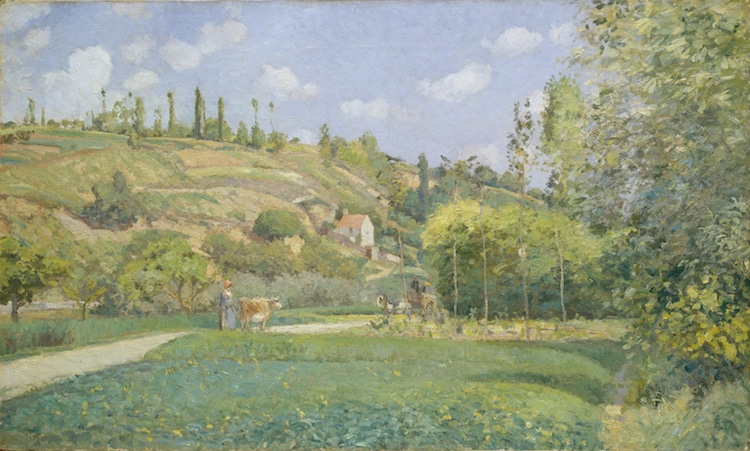
Camille Pissarro, “A Cowherd at Valhermeil, Auvers-sur-Oise,” oil on canvas, 1874. (Photo: The Met, Public Domain)
Post-Impressionist Period
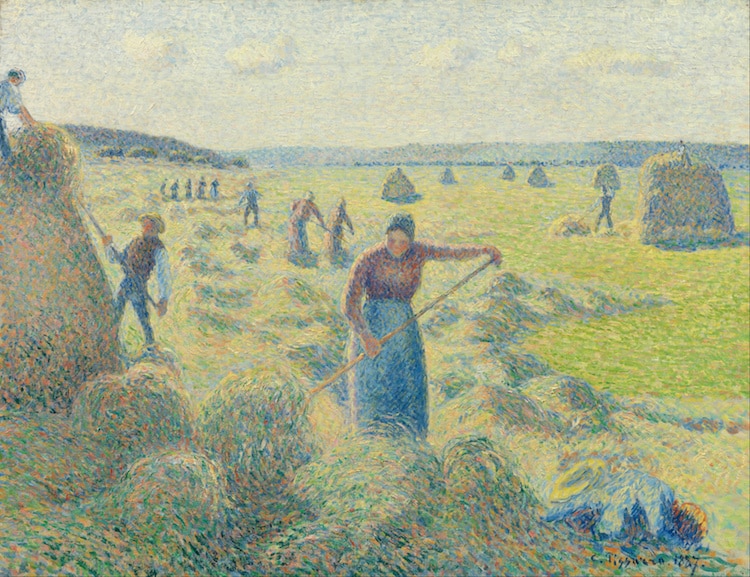
Camille Pissarro, “La Récolte des Foins, Eragny,” oil on canvas, 1887. (Photo: Google Arts & Culture, Public Domain)
The initial energy of the Impressionist movement began to wane in the 1880s, and Pissarro, at the age of 58, sought a new style to inspire his art. This led him to Post-Impressionist painters Georges Seurat and Paul Signac, who practiced a scientific approach to painting.
Their technique, referred to as Pointillism, required the painter to apply color to the canvas in small daps or spots. Even the order in which color was applied to the canvas was done according to color theory. Pissarro quickly adapted to this approach and created numerous paintings in the style.
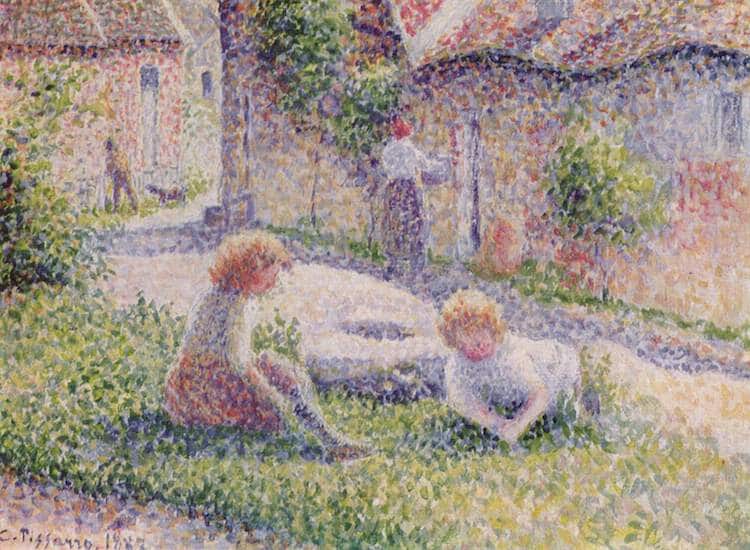
Camille Pissarro, “Children on a Farm,” oil on canvas, 1887. (Photo: Wikimedia Commons, Public Domain)
Final Years and Legacy
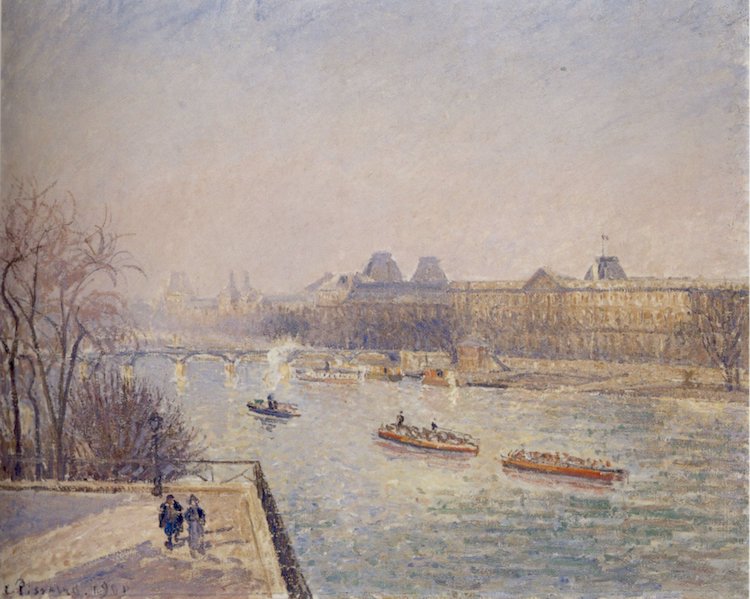
Camille Pissarro, “Morning, Winter Sunshine, Frost, the Pont-Neuf, the Seine, the Louvre, Soleil D'hiver Gella Blanc,” oil on canvas, c. 1901. (Photo: Wikimedia Commons, Public Domain)
Later in life, Pissarro turned away from Post-Impressionism and Pointillism to settle on a style that was subtle, refined, and more like his earlier works.
As one of the founding members of the Impressionist movement, Pissarro played a large role in developing the style and encouraging independent exhibitions of an artist's work. Many of his contemporaries commented on the artist's ability to adapt to different styles and ideas while still maintaining exquisite techniques. His contributions to the movement—both as a painter and a teacher—greatly influenced the course of modern art.
Related Articles:
5 of Renoir’s Most Famous Paintings That Any Impressionism Lover Should Know
How Impressionism Changed the Art World and Continues to Inspire Us Today
The Story and Inspiration Behind Claude Monet’s Iconic ‘Water Lilies’ Series
Exploring the Meaning Behind Édouard Manet’s Painting ‘A Bar at the Folies-Bergère’











































































